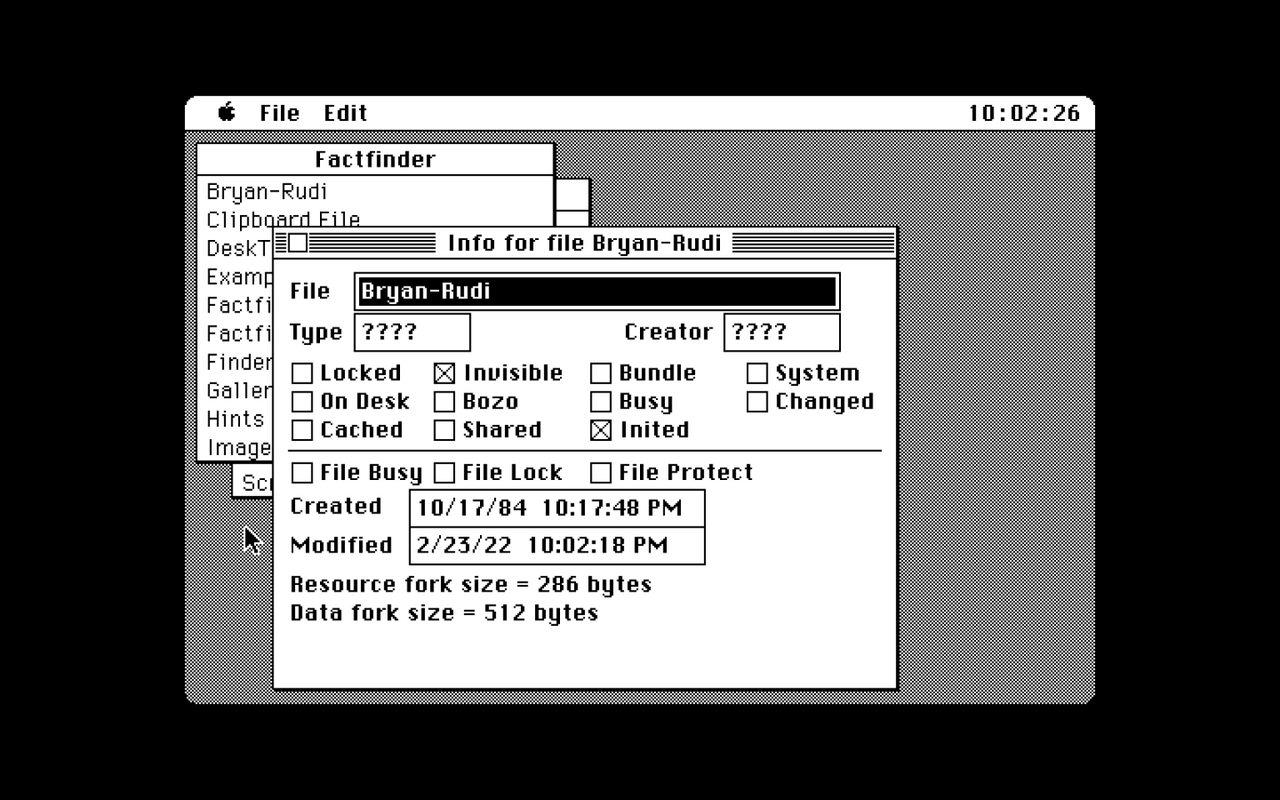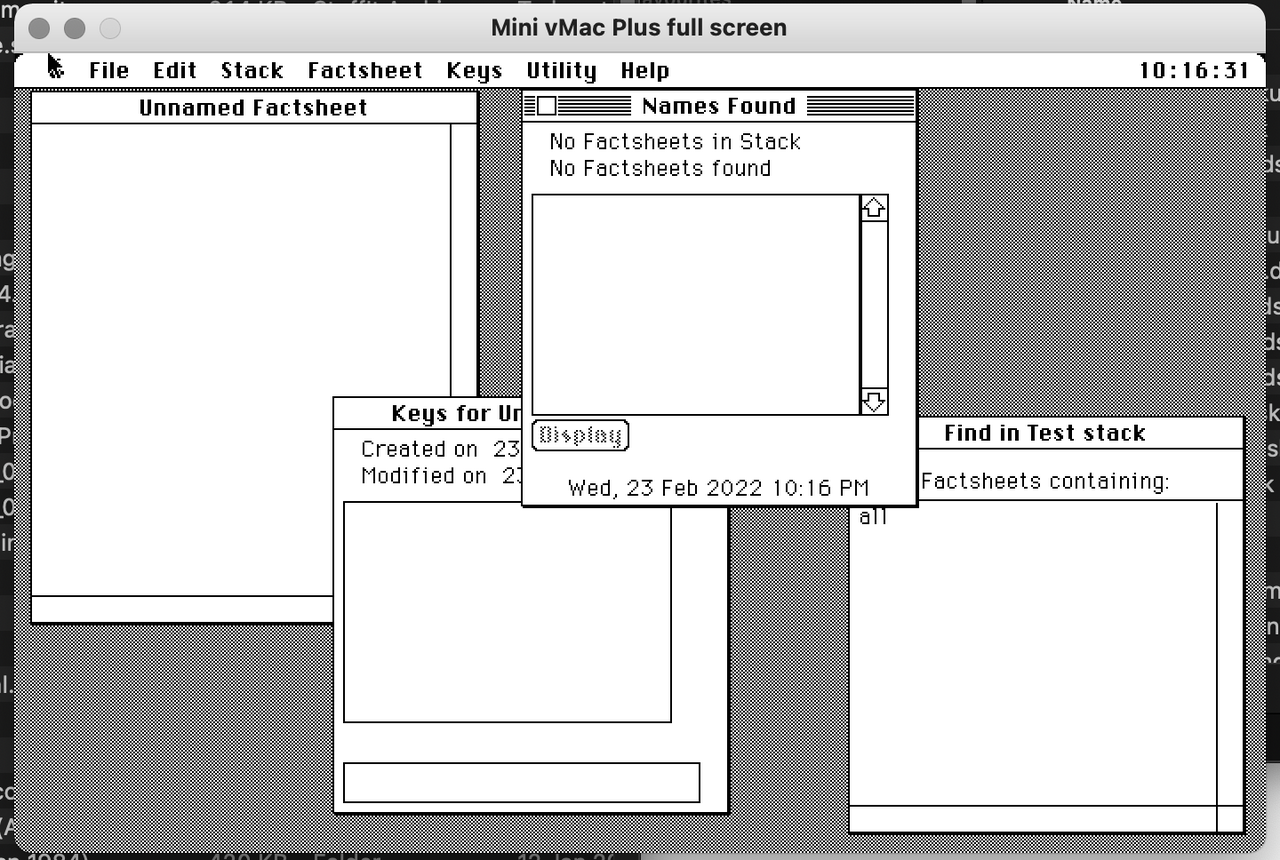Adventures in copy protection
I read somewhere about a nice-sounding database program from 1984 called FactFinder. I can’t remember where I read about it originally, but I thought it might be useful for collating my reading and information for assignments on the 128k. It wasn’t on any of the regular vintage Mac software websites MacintoshGarden.org; MacintoshRepository.org. I eventually found a copy on Macgui.com (which is also host to the amazing Mac512k Blog, which is one of the big inspirations for this blog — not that I could ever hope to live up to it). A French system file, but that was easily enough remedied.
Unfortunately, copying it onto a hard drive meant that it became a demo version:
 Hmm. This smells like copy protection. Hopefully it’s typically cunning 1980s copy protection.
Hmm. This smells like copy protection. Hopefully it’s typically cunning 1980s copy protection.
I opened my trusty copy of ResEdit 0.8, and sure enough — a weirdly-named file on the original disk that doesn’t show up in the Finder:
 Unchecked the “Invisible” box, copied it to the other disk image, made it invisible again (after it didn’t work while the file was visible, of course) and Robert’s your mother’s brother:
Unchecked the “Invisible” box, copied it to the other disk image, made it invisible again (after it didn’t work while the file was visible, of course) and Robert’s your mother’s brother:
 I’ve uploaded this to Macintosh Garden now.
I’ve uploaded this to Macintosh Garden now.
Interestingly, the developers seem to have been around at least as late as 2011. They have a blog post at diezmann.com talking about rewriting the software for a more modern audience. One of the authors is Rudi Diezmann — it seems like we’ve found half of Bryan-Rudi. Turns out it was his real name! I wonder who Bryan was…
Quoting extensively from that post:
Fact Finder Software was established in 1979 as a software development and consulting firm with offices in Santa Monica, California and Seattle, Washington.
The initial focus of the company was to provide consulting services for mainframe database users, but Fact Finder shifted its attention to the embryonic microcomputer market in 1980.
The company initially developed a number of programmers’ tools and end user applications which were released for the Apple II, Apple /// and IBM PC. These included a disk-based word processor and one of the first PC communications programs to support 1200 baud operation.
Fact Finder Software also provided consulting services to a variety of clients, including Ashton-Tate, Borland, Software Publishing, Apple Computer, CalFed, and State Farm Insurance as well as a number of law firms in southern California.
Returning to the founders’ interest in information management, Fact Finder developed its first “text storage and retrieval” product, sold as “DataFax” in 1982.
In 1983 the company began the development of FactFinder™ for the Macintosh, a text storage and retrieval application which was introduced in September 1984 and which continues in use today. This application was received very favorably by the market, with many thousands of satisfied customers. It was heralded by Byte Magazine as being of sufficient technical novelty that it warranted a separate preview article.
Although the application continued to be well reviewed and was popular among its user community, the developers moved to other things.
I also found an old review which describes FactFinder as “intriguing”.
Another — rather more comprehensive — review from InfoWorld.
So, I have a fully-functioning version, it appears. I’ll try to use it and see how it goes.
